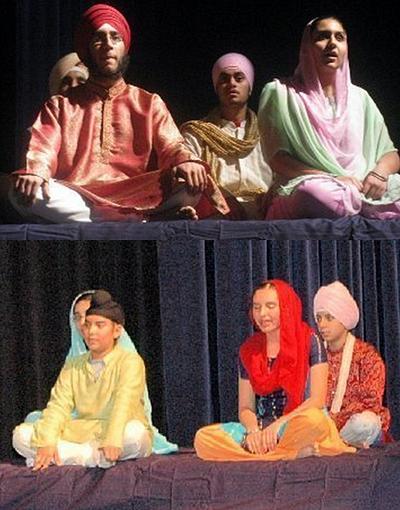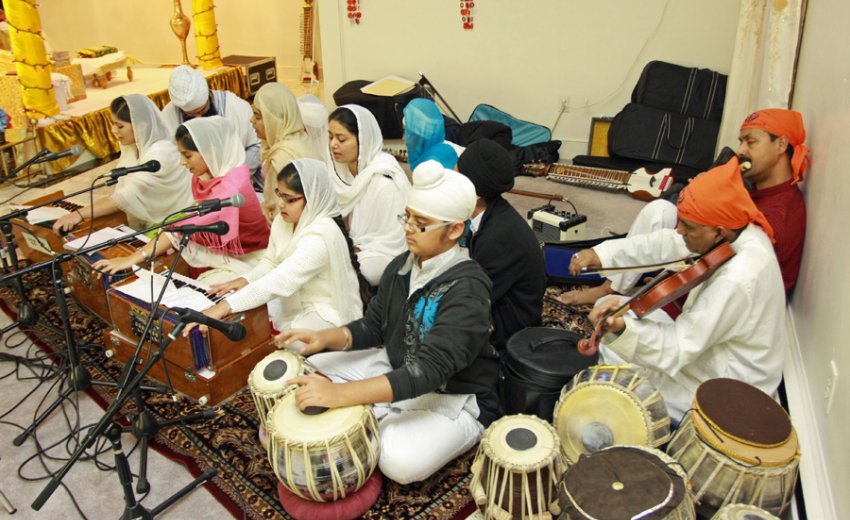As I was randomly going through YouTube clips a few days ago, I came across the below video of a group of Sikh children in Fremont, who learn kirtan in classical raags. Despite the poor audio, its obvious that they are good and I know this also from having heard them (and some of their contemporaries) in person – they are GOOD.
A couple of weeks ago Jodha reported on an article that brought to light the fact that Sikh children are practicing the tradition of kirtan, but what I think we didn’t discuss there is how this generation of Sikh musicians has really become one of classical musicians, learning stringed instruments of old and performing keertan in the Classical or raag framework. The growth has been obvious, especially in recent years – with the rise of institutions such as the The Raj Academy in Great Britain and the Gurmat Sangeet Department at Punjabi University Patiala, which specialize in providing instruction in traditional (classical) kirtan, and even the Miri Piri Academy in Amritsar of which the Chardi Kala Jatha (classically trained professional Sikh musicians who happen to be American in nationality) is a product.
 But, aside from those larger scale organizations, the growth in local interest is also very apparent. As a teenager I remember competing in kirtan competitions and being one of a handful of musicians whose performance was based in raag. However, now, when I attend the very same competitions I it is hard to identify a performance that is not classical in nature. The shift has been amazing. On top of this, many of you may have noticed the growth in the teaching of traditional stringed instruments in the Sikh Diaspora: Khalsa Schools and private organizations across the Sikhdom are placing a greater emphasis on kirtan in raag and in teaching young Sikhs stringed Indian and Sikh instruments.
But, aside from those larger scale organizations, the growth in local interest is also very apparent. As a teenager I remember competing in kirtan competitions and being one of a handful of musicians whose performance was based in raag. However, now, when I attend the very same competitions I it is hard to identify a performance that is not classical in nature. The shift has been amazing. On top of this, many of you may have noticed the growth in the teaching of traditional stringed instruments in the Sikh Diaspora: Khalsa Schools and private organizations across the Sikhdom are placing a greater emphasis on kirtan in raag and in teaching young Sikhs stringed Indian and Sikh instruments.
So the point is – its awesome that this generation of Sikhs and those growing up after us have the opportunity and the will to learn Gurbani in conjunction with Gurmat Sangeet – the form that the Gurus gave it.
NOTE: I keep using the word “classical” – so I suppose a note is in order as to what I mean: Classical in the context of Sikh music is what is known as “Gurmat Sangeet” – and refers to music performed in accordance with the raag framework of music. From my understanding Gurmat Sangeet is rooted in Utar Baratiya Sangeet (Northern Indian Classical). Our Gurus wrote Gurbani in raag (musical scale) and taal (metre) and therefore, Gurmat Sangeet is most often used to refer to the set of raags and taals in which Gurbani is composed.
